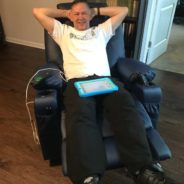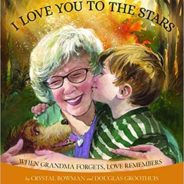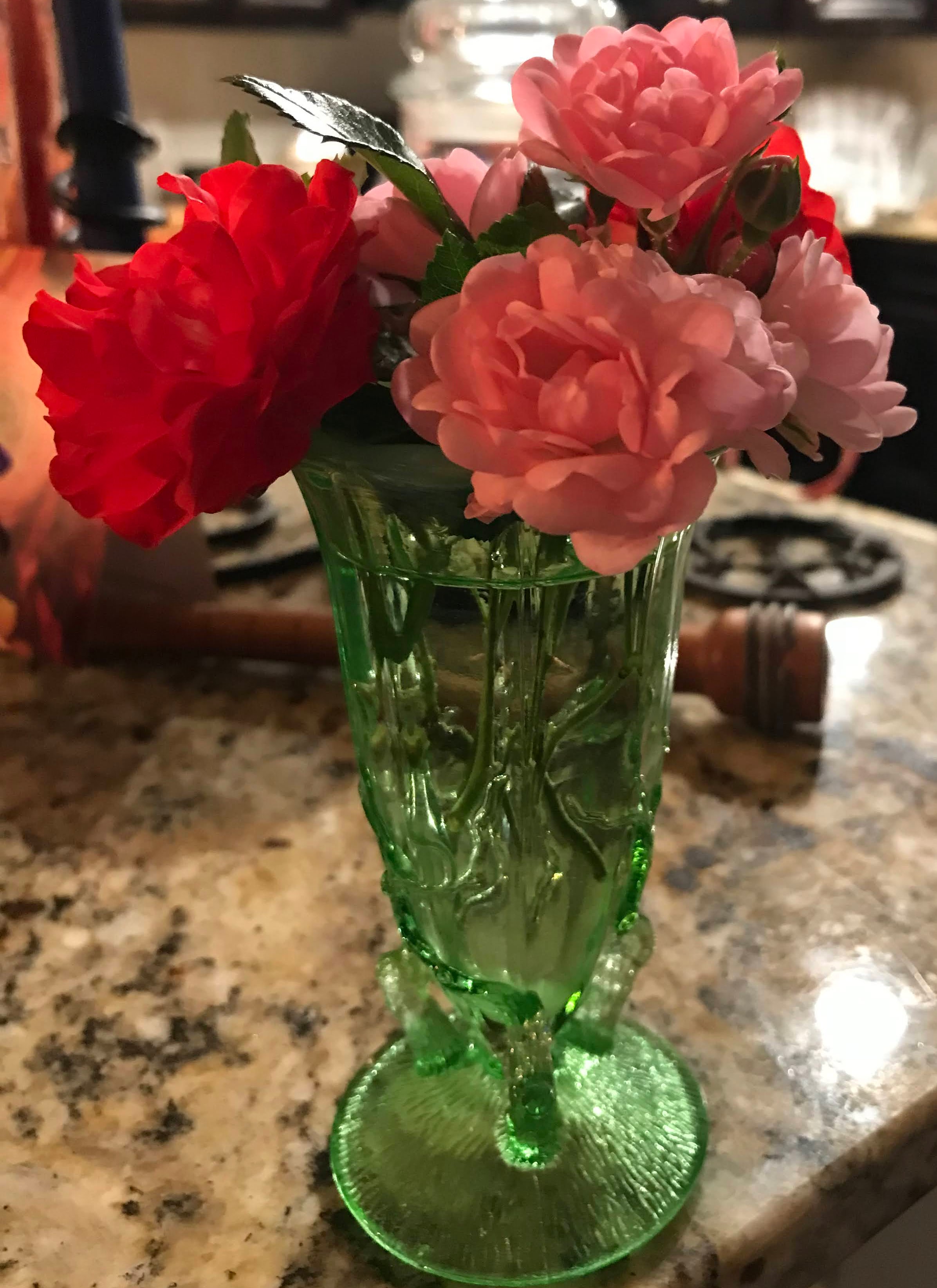Snapshots of Dementia: Inside Edition
A recent photo of Tom in his recliner, one of his birthday gifts this year. Although I shared a guest post last week, most of the snapshots of dementia so far come from me. Today, I wanted you to hear from someone else—someone who’s been present throughout our dementia journey. That person is my husband of almost 39 years, who has been living with dementia for at least the past five years and probably much longer. As Tom’s symptoms progress, he has increasing trouble focusing on more than the simplest information. Always a creative who loved to share ideas and information, he used to say he didn’t think outside the box—he couldn’t even find it. Today, his cognitive box is small—and it shrinks a little more every day. I conducted the following “inside edition” interview one evening this week—not the best time for him because of the sundowning I mention in this post. Despite my editorial distaste for ellipses, I’ve used them here to indicate pauses—sometimes long ones. I consider this a true snapshot of dementia: Tom’s perspective in his own words, even when his answer doesn’t match my question. MP: So if you were going to tell someone what it’s like to have a young-onset dementia like this, what would you say? TP: It is just deceptive. One point, you can be clear-headed. . . and putting footstep after footstep, and then other times, you. . . it’s. . . You know that I. . . I try to. . . try to keep a good. . . attitude and. . . it’s frustrating to me that like, when I have sundowner’s, because it just. . . it’s just like Let’s Make a Deal. You open it and suddenly you’re just there. You can’t change your emotions. . . Your continued encouragement and taking care of me and setting up stuff for me. . . it’s so encouraging. Sometimes you have pulled me off the cliff … and I feel encouraged and loved and cared for. . . . I never in any of my dreams ever thought that this is where I would be now (tears). MP: What do you think is the hardest thing for you about having this disease? TP: One thing would be. . . there are times when I can walk, and. . . I try. . . I try to keep reading because I don’t want to be locked in on word games and my golf game [both games he plays on his iPad]. . . . There’s not very many times that it happens, but sometimes you are wanting to do something or wanting to go someplace. . . and I’m trying to. . . I always love going someplace with you, which is not to say that I don’t love being with you right now. . . . It’s almost just. . . like one day you wake up and you can walk 10,000 miles, 10,000 steps I mean, and then another day. . . . I would be scared to go any place without my walker. MP: You know, so far, we haven’t used your walker. {He’s had a walker for about three weeks but has so far avoided using it.] So are you saying you’d just stay at home...
read moreSnapshots of Dementia: ‘I Love You to the Stars’
Guest post by Crystal Bowman A note from Marti: Tom finally received a diagnosis of dementia not long before my friend Crystal Bowman wrote a children’s picture book dealing this challenging topic. But even at this stage in our journey, I recognized When Grandma Forgets, Love Remembers as an important work. I’m so thankful for this book, which captures the beauty of the grandparent-grandchild relationship all the way through the dementia journey. I also know a precocious 4-year-old for whom it will have special meaning. I encourage you to check it out for yourself or someone else who may need this vital resource. Senior Moments As we age, we joke about being forgetful or having a senior moment. But when memory loss is the result of dementia or Alzheimer’s, it isn’t funny anymore. With the Baby Boomer population aging, dementia is on the rise. It is estimated that 1 in 10 adults over the age of 65 have some form of dementia. This debilitating disease affects not only the person, but the extended family as well. How do parents explain to their children that Grandma or Grandpa no longer knows their name? Children are sad and confused when the relationship they enjoyed is no longer there. Parents need resources to help children understand why things are different. I Love You to the Stars, When Grandma Forgets, Love Remembers (Kregel Publishing, 2020), is a picture book that enables parents to explain memory loss to a child. The Sweet Story The story begins when Grandma and her dog, Sunny, move in with a young boy and his mother. The boy and his grandma spend hours doing puzzles, reading books, and going to the park. One day, when the boy returns home from school, Grandma is in the driveway with a police officer. She and Sunny went for a walk and got lost. Things continue to worsen when she misplaces items in the house and when she no longer engages in activities. The mother explains that Grandma’s mind is sick and now it is their turn to help her. When they can no longer care for her, she moves to a home where caregivers help with her daily needs. The boy, his mom and Sunny visit her often and enjoy spending time with her again. The message in the story is that even though memories may fade, love will always last. The Story Behind the Story A professor from Denver Seminary lost his brilliant wife to dementia in her early 60s. He wrote about his painful journey in a memoir but wanted to reach children as well. The story of his wife was the inspiration for this book. It is considered fiction, but many of the events actually happened. We sent a picture of Sunny to the illustrator and his portrayal of Sunny is perfect, adding a bit of warmth and humor to the story. Marti again: How has dementia affected the grandparent-grandchild relationship of someone you know who is living with dementia? Feel free to share your thoughts in the comments below or on social media. Our story matters—and so does yours. Crystal Bowman is an award-winning, bestselling author of more than 100 books for children and families. She is the creator and coauthor of Our Daily Bread for Kids,...
read moreSnapshots of Dementia: Sunrise, Sunset, Sundowning
Photo by David Mullins on Unsplash As I’ve said before, Tom and I are the typical opposites who attract. We realized early on in our marriage that even our sleep patterns differed. I could remain alert late at night but took a while to feel like talking in the morning. He needed an earlier bedtime but arose, fully recharged, no matter how early the alarm clock rang. All that changed, however, with the arrival of our first child—and then our second ten months later. I’ve often said that mothers have to be both night owls and early birds. Once again, my parenting experience has served me well, as I now need alertness at many times of the day. That’s especially true because over the past several months, sundowning has played a more significant role in our lives. In case you haven’t heard of sundowning or sundown syndrome, it refers to a set of symptoms that typically occur as daylight begins to fade, generally in older adults with one or more forms of dementia. It can involve restlessness, agitation, irritability, confusion, and more—and it often makes going to bed and staying asleep a challenge. Tom has taken medication to help him sleep since we first began treating his dementia symptoms, so I suppose he’s shown sundowning behaviors for a while. Without the medication, he tends to wake up much more or becomes agitated, even violent, in his sleep. With the medication, he sleeps well—for the most part. As a person living with dementia, he also requires more sleep than he used to. The activities of daily living are much more difficult for him than in the past. His broken brain has to work harder to process simple conversations and ideas. If we have an outing or appointment during the day, he almost always comes home exhausted. He still loves interacting with people, but the mental challenge wears him out. That exhaustion was one of those dementia symptoms I noticed long before the doctors agreed with me that anything was wrong. The simplest tasks seemed to tire him, and he took naps whenever he had the opportunity—something he’d never done before. I wondered if he was aging prematurely, and in a way, I guess he was. If you look at photos of him now compared to even a few years ago, you can see the toll his disease has taken on his face. Of course, that’s nothing like the toll it has taken on his life. Tom’s sundowning means I can’t ask him questions late in the day and expect a coherent (or any) response. His tremors worsen, so he’s more likely to spill his food and drinks. For the past month or two, whether or not we have an outing, he often takes a late-afternoon or early-evening nap and is still ready for bed as early as 8 or 9 p.m. When he goes to bed this early, he may have a restless night, or he may sleep well. Trying to get him to take an earlier nap, as you can imagine, is about as effective as getting a cranky child to do the same. But there have been days when he’s taken naps morning, afternoon, and evening—and still gone to bed by 9 p.m. On some occasions, his sundowning results in agitation....
read moreSnapshots of Dementia: Tender Loving (Self-) Care
Roses from my garden, 2022 Friends and acquaintances often ask me how Tom is doing. The short answer is that there’s no short answer. The long answer? Well, I wrote about that here. If that question is a FAQ, this next phrase is an FMS: Frequently Made Statement. It comes in several different formats, but they all sound a lot like this: — “I hope you’re taking care of yourself.” — “Don’t forget to take care of yourself.” — “You know, you really need to take care of yourself.” You get the picture: I have friends and family members who want to make sure I’m not lost in the process of caring for Tom. I don’t think a lot about this topic until someone brings it up, but I do find ways of caring for myself. Just as the rest of our life looks very different now than it did only a few years ago, self-care looks different too. For one thing, I can rarely leave the house without Tom. For another, I’m the breadwinner rather than the freelancer who scheduled her work around family and other commitments. The COVID-19 pandemic hit not long after I began working from home and caring for Tom full time. For more than a year, we didn’t go out much at all. That and my God-given bent toward home and family shape my lifestyle even now. So, in no particular order, these are a few of the ways I practice self-care: — Exercise: I’ve been in the habit of walking at least three miles/day for many years. I try to do four or five miles a day now. Much of that happens inside the house because Tom’s leg pain means he doesn’t always feel like walking, but when we can, we still enjoy walking outside together. — Showers: After multiple mission trips to countries where water is a luxury, a shower remains a cherished gift. Right now, I can still shower while Tom rests in his recliner. Those few moments of peace, enhanced by my favorite bath products, provide simple but special self-care. — Worship: Worship feeds my soul and spirit more than anything else. When I attend choir practice, the songs stay in my heart all week and provide needed strength. If and when Tom can no longer attend church services, I plan to have someone else care for him so I can still go. Online church is a wonderful provision, but it doesn’t replace in-person connection. — Baking: Gone are the days of making 50 dozen cinnamon rolls over a three-day period to support our children’s mission trips. But I still love to bake, and that meshes well with Tom’s increasing desire for sweets. For both our sakes, I try to find a good balance. — Gardening: I’ve enjoyed adding roses, daylilies, and other plants to our yard over the time we’ve lived here. Working in the garden always brings me joy, and even if I run out for only a few minutes to water a plant or deadhead a rosebush, I return refreshed. — Feeding the Birds: A few months after we moved here, I bought one bird feeder. That one has now become six, two of which are attached to my office window. I never thought I...
read moreSnapshots of Dementia: That Time We Were Glad He Forgets
Photo by Valeriia Bugaiova on Unsplash Throughout our dementia journey, good times and challenging times have intertwined. God’s sovereign hand means even the darkest of circumstances can dawn bright enough to be a blessing. We also know that even the happy times carry a profound element of grief. This past winter, an unusual chain of events transpired that reminded me that even those times of forgetfulness and confusion play a part in the way God “causes all things to work together for good to those who love him and are called according to his purpose” (Rom. 8:28, NASB). We experienced this in the fall of last year, and it began with a physical fall—one that only happened because of Tom’s dementia. He and I had done some Saturday shopping at a local grocery store. I’d had reverse shoulder replacement surgery only weeks before and still had one arm in a sling. With my one good arm, I was loading the groceries into the back of our car, Tom by my side. As we finished, our grocery cart rolled down the store’s sloped parking lot, and a woman driving toward us honked her horn. I turned around, but it was already too late. Tom was running to retrieve the cart, both hands in the air, swinging his body from side to side. Despite his panic, there was no emergency; the cart wasn’t rolling fast, and we could have retrieved it. The car, a large SUV, wouldn’t be damaged by its impact. But a real emergency loomed. In my head, Tom had already fallen and I was calling 911. And then it happened. He fell flat-out, right in front of the oncoming car (mercifully stopped at this point). Within seconds, I was by his side. “Baby! Are you OK?” I said as he lay there, stunned. “I think I am,” he said as I helped him up. I told the driver that he was fine, and she drove on around us, no doubt wondering why he had run as he did to retrieve the cart. I didn’t wonder. I already knew that dementia had stolen Tom’s “safety” mode. When his fight-or-flight response kicks in, it’s strong and immediate. But I also knew he might not be fine. But since he hadn’t lost consciousness and had no obvious injuries, I took him home. By Monday, I called our primary care physician because his pain had increased, and I feared he had broken a rib. It was now Thanksgiving week, and she had no appointments, so her office sent us to an Urgent Care. An x-ray showed two broken ribs—and a large mass in his left lung with extending fingers to the lymph nodes. Once CT scan and two appointments (one with our own doctor and one with a pulmonologist) later, we were facing the strong possibility that Tom had lung cancer. I let our children know what the doctors had said and waited for the next appointment: a bronchoscopy and biopsy. The pulmonologist would sedate him lightly and explore his lungs with a lighted scope, taking biopsies so we would know exactly what was wrong. So why were we glad Tom didn’t remember and, probably, didn’t understand? Because throughout this ordeal, for only a few hours did he understand he might have cancer. Sometimes, he has moments...
read more








